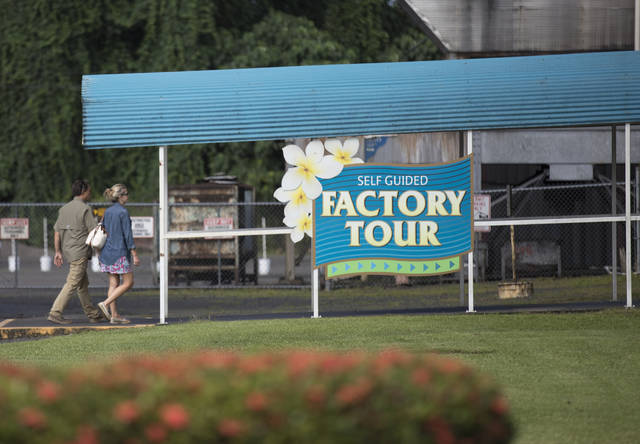Tourism numbers were up statewide in May, but the Hawaii island market is finally showing the softening that the visitor industry has been dreading since the Kilauea eruption began
May 3.
The Hawaii Tourism Authority already has spent $500,000 on U.S. and Japan emergency marketing plans, but it approved another $450,000 for Hawaii Tourism Japan on Thursday. The
Hawaii Convention and Visitors Bureau also put HTA on notice that it plans to ask for another $1.2 million to market to U.S. customers once volcano viewing sites open.
Total visitor arrivals statewide increased 7 percent
to 804,135 visitors in May from the year-earlier period while spending rose 11 percent to $1.42 billion last month, according to preliminary statistics released Thursday by HTA. The spending figure was not adjusted for inflation.
While air service was up
8 percent to 796,178 visitors, cruise ships were down to 7,957 passengers, a nearly 43 percent dip from May 2017. In response to the Kilauea volcano eruption, Norwegian Cruise Line canceled Pride of America’s port calls to Hilo and Kona during three voyages in May.
Although NCL has since returned to Hawaii island, its earlier cancellations prevented 6,600 visitors from stopping on Hawaii island in May. That contributed to a nearly 2 percent dip in overall visitors to Hawaii island, the first real downturn of the year.
Now the key question is how much of a disruption the Hawaii island dip is going to create for the state’s overall visitor industry, which during the first five months of this year, appeared headed toward breaking a benchmark of
10 million visitor arrivals in 2018.
“The first five months of this year were amazing, then it went off the cliff,” said Keith Vieira, principal of KV &Associates Hospitality Consulting. “Most Big Island hotels are reporting transient pace is down by 40 to 50 percent. The big hotels will weather this, but it’s a major blow to the smaller hotels and the smaller
businesses.”
So far, U.S. wholesalers are reporting that forward bookings in May were down up to 50 percent, said John Monahan, president and CEO of the Hawaii Visitors and Convention Bureau, an HTA contractor that markets Hawaii to the United States. Group hotel bookings also have softened, Monahan said.
Hawaii Tourism Japan is reporting that as of June 20 its private tourism partners have spent $5 million to regain businesses, but total package cancellations to
Hawaii island total 7,109 people. Eric Takahata, HTJ managing director, said
Japan Airlines and Hawaiian Airlines have seen cancellations from 3,200 people. More worrisome is that the wholesalers are reporting the booking pace is down
50 to 77 percent, depending on the month, through December, Takahata said.
“It’s a 9/11 kind of scenario,” said HTA board member Gerald De Mello, who is a retired community liaison for the University of Hawaii at Hilo.
De Mello said he’s concerned that Hawaiian Airlines has canceled flights into Hilo and that some
Hawaii island businesses are struggling.
Even businesses as far away as Kona and the Kohala Coast are struggling, said Elizabeth Churchill, owner of The Churchill Group LLC. In May, hotels in the Kohala Coast reported that their occupancy dipped more than 6 percentage points to nearly
64 percent.
The good news, said
Monahan, is that “we can still turn it around.”
“Establishing safe viewing sights is going to be key,” Monahan said.
Until alternate viewing sites are made available, Takahata said, HTJ is working to show visitors from
Japan that there are plenty of other activities and sights that they would enjoy.
“The volcano is great, but there are so many things to do on the island of Hawaii,” he said.
Still, Vieira said real improvement won’t come without aggressive measures. It’s concerning that there’s no end in sight for the eruption, which has resulted in the closure of the popular Hawai‘i Volcanoes National Park and a dearth of volcanic viewing sites that are open to the public, he said.
“We have to find a way to promote the eruption now. Because even if it stops, it could take three to four months or more for the market to turn around,” Vieira said. “If this continues, I expect we’ll see softening on Hawaii island all the way into next year.”

